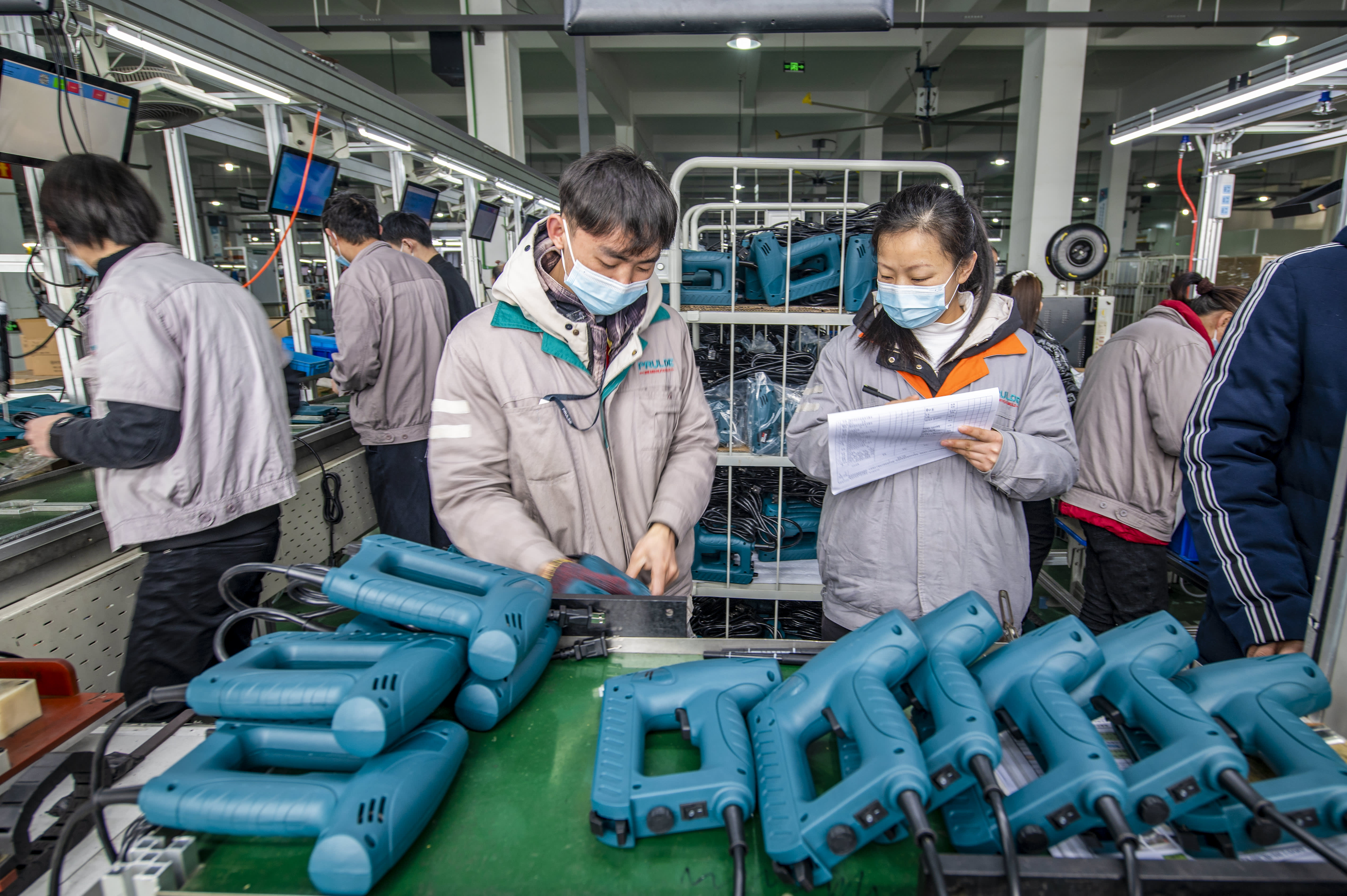
Workers produce heat guns for export at a factory workshop of Zhejiang Prulde Electric Appliance Co Ltd on January 17, 2022, in Jinhua, Zhejiang.
Hu Xiaofei | Visual China Group | Getty Images
BEIJING — China’s factory production faces “rather large” downward pressure for the first quarter, an official with the national Ministry of Industry and Information Technology said Thursday.
The industrial economy still hasn’t seen a firm recovery, due to the global pandemic, weakening trade growth, lack of consumer demand and other factors, spokesperson Luo Junjie told reporters.
“On top of that, recently the coronavirus has spread to many places,” Luo said in Mandarin, according to a CNBC translation. “In the first quarter of the year, the industrial economy still faces rather large downward pressure.”
Since late December and the entrance of the highly transmissible omicron variant into the country, local Chinese authorities have announced more lockdowns and travel restrictions to prevent Covid outbreaks from spreading.
These recent lockdowns would only have a short-term and limited impact on supply chains, Tian Yulong, chief engineer and another spokesperson for the Ministry of Industry and Information Technology, told reporters at the same press event Thursday.
Chip shortage will last for a while
The industry ministry’s Luo added that although the shortage in semiconductors has eased, supply will remain tight for a while. He is also director of the bureau for monitoring and coordinating operations.
China’s semiconductor production rose by 33% in 2021 from a year ago, with December’s chip production up 1.9% year-on-year to 29.9 billion units, according to official data released Monday. Auto production grew by 3.4% year-on-year in December, the first increase since April.
Since the height of the coronavirus pandemic in China in 2020, local governments have used swift lockdowns of cities, apartment compounds or even office buildings to stem the virus’ spread. That zero-Covid policy helped the country quickly control the nationwide outbreak and resume production.
Analysis from Citi even said in a Jan. 7 report that “the supply chain relocation out of China appears to have slowed or even reversed amid the Covid-19 global outbreaks.”
“China’s effective containment of the coronavirus has allowed its factories to quickly resume production,” Xiaowen Jin, a China economist at Citi, and a team wrote. “Over the last two years, its rather complete industrial system has allowed China to play the role of ‘production of last resort’ for the rest of the world when the ensuing spread of the Covid-19 to the rest of the world has caused economic paralysis in both developed and developing economies.”
However, omicron’s high transmissibility means the costs of the zero-Covid policy are rising, while benefits are falling, Nomura’s Chief China Economist Ting Lu said in a report earlier this month.
So far, the policy has affected consumers more than factories.




